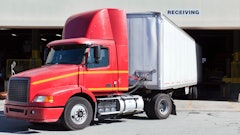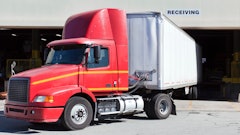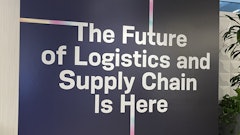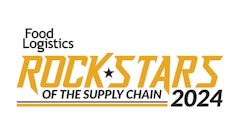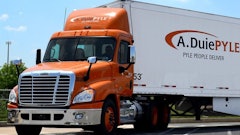
As fleet managers asses the trucking industry landscape for 2018, what stands out is a dynamic market that is growing alongside an expanding economy—both domestically and globally—coupled with advancements in technology that promise increased safety, visibility and efficiency.
Regulatory compliance issues are also top of mind, especially the Federal Motor Carrier Safety Administration’s (FMCSA) electronic logging device (ELD) mandate, whose impact is still very much in play.
“It’s hard to get a good, accurate measurement of what the ELD mandate is actually doing in terms of capacity in the marketplace,” confirms Jonathan Starks, transportation analysis expert at FTR Transportation Intelligence. A survey from CarrierLists.com suggests that one quarter of small fleets (between five and 100 trucks) are not ELD compliant, though other surveys show that smaller carriers are at least improving their compliance and implementation efforts with the mandate, he says. However, until the more significant enforcement stage comes into effect on April 1, it’s difficult to determine how much capacity might be negatively impacted.
Specifically, while the ELD mandate came into force on Dec. 18, 2017, the FMCSA has stated that drivers who are cited for not having an e-logging device between Dec. 18 and April 1 will not have points recorded against them in the Compliance, Safety, Accountability (CSA) carrier scoring system.
In the meantime, when it comes to capacity, “We’re already in a very tight environment,” says Starks.
“After the hurricanes (in 2017) hit, we saw record highs for our market demand index, which is basically looking at load availability versus truck availability; it’s simply a capacity utilization measure. Those numbers spiked to record highs back in early September. They’re back down from where they were, but they’re still at very high year-over-year numbers,” he says, adding that, “There’s essentially no idle capacity that can readily be put into service to dramatically alter the landscape of what’s going on in the marketplace right now.”
Outlook
The question for fleet managers remains: How long will the capacity crunch last? According to Starks, for at least the first half of the year, we will continue see a very tight market. “After that there’s potential for things to start to loosen up, but it would still stay very tight,” he adds.
The pace at which the industry adopts and complies with the ELD mandate will have a bearing on capacity, so too will the overall economic environment, he says.
“If (the economy) stays strong like we’ve seen recently, then it’s going to remain tight throughout 2018,” Starks says. “However, if we get a little bit of a reverse and return to the growth environment that we’ve experienced during most of the economic recovery, then things will ease up a bit. We’ll still have growth, but we should be able to add in enough capacity to support it, and the market will slowly start to come back to a more normal environment. That scenario would not happen until the second half of the year though, so there are still unknowns.”
As for the state of infrastructure in the United States, Starks doesn’t foresee any significant changes to the status quo, which means chronic congestion will remain an issue. Even if the Trump administration were to pass an infrastructure-spending bill, in the near term it would actually make things worse, not better, he explains. On the other hand, long-term developments like changes to truck size and weight regulations, platooning, and autonomous vehicles have the potential to more effectively address congestion and boost truck productivity, but are still down the line. “They really aren’t going to impact the marketplace in the next few years,” adds Starks. “Things like autonomous vehicles are going to have a more slow-step approach. While it is a transformative element, it will come along in incremental steps.”
When it comes to new technologies such as Tesla’s electric semi-truck, admittedly Starks concedes “they get a lot of bang,” but he sees more immediate promise in electric vehicles, which “have more of a potential impact in the local segment and for final mile deliveries.” He expects the industry will see electric vehicles used for routes with a maximum of a few hundred miles, which would allow the vehicle to go out, make its delivery and then return to charge up.
“We saw something similar a few years ago with a move to natural gas vehicles, but I think that electric vehicles have a better chance of becoming more fully developed,” he notes. “Natural gas is a more transitional fuel—not a fuel for the long term. Electric, however, is fuel neutral. You can recharge an electric vehicle with coal, diesel, natural gas or with renewables, which makes it much more conducive to long-term development.”
Rising demand for truck transportation is simultaneously driving orders for trailers, including refrigerated trailers.
“That market segment has been adding capacity pretty significantly over the last few years, and stayed strong in 2017 as well,” says Starks.
Furthermore, it’s not just temperature-controlled food that is driving the need for more refrigerated trailers.
“There’s a lot of activity outside of the food sector that is coming into the refrigerated market that we never had to deal with before,” he says, such as pharmaceuticals, fresh flowers, and health and beauty products. “Even though we are adding a lot more refrigerated trailer capacity, it’s getting soaked up pretty quickly.”
Opportunities
Like most business obstacles, the other side of the coin usually reveals opportunities. Compliance with the ELD mandate undeniably represents added costs for many carriers, yet there are benefits associated with the investments required to achieve compliance, notes Jim Griffin, chief operations and technology officer at Fleet Advantage.
Not surprisingly, fleets that have been using telematics for a while are in a better position to more quickly comply with the ELD mandate compared to those that have just recently started outfitting their equipment with the technology.
“Introducing telematics into a fleet is initially disruptive and challenging,” acknowledges Griffin. “It impacts behavior, processes, reporting systems, culture and a host of peripheral activities. In fact, the cultural mindset alone might be the most challenging aspect, especially for fleets that are new to telematics.”
In addition to compliance with the ELD mandate, fleets that have already made investments in telematics and other technologies are receiving benefits in the form of increased data visibility, data management and reporting that continues to advance year over year. Telematics should be providing actionable data, leading to increased efficiency and controlled costs, while enhancing their end customer experience, Griffin explains.
There are other issues for fleet managers that can be viewed as both an obstacle and an opportunity, such as maintenance costs, he says.
“Our customers are becoming more focused on how to properly record, analyze and monitor maintenance cost data. Additionally, they are focused on the value of asset lifecycle management as a means to better control maintenance costs,” says Griffin.
“We have also noticed an increased focus on how leasing structures are affecting their balance sheet. The proposed changes in accounting standards and tax laws have created an emphasis on how expenditures, with regards to capital equipment acquisition, are categorized and how they affect the organization’s overall financial KPIs. This is increasing the need for the operations departments and the finance/accounting departments to collaborate in ways we have not seen in the past. While cost control has always been important when it comes to capital equipment acquisition, the details of how the equipment is acquired (e.g., via lease, loan or purchase) have, in general, been the extent of the conversation between the two areas.
“Today, we are seeing a deeper conversation about the value of certain financial reporting impacts based on the financial structure of the lease. We’re working diligently to ensure both operations and finance departments have the right dialogue on how best to structure the lease that is most beneficial to their financial and operational goals,” says Griffin.
New technologies and innovations are helping to support a more open mindset in the industry, adds Griffin, which is evidenced in several areas key to fleet managers.
For instance, “fleets that continue to operate their business with legacy operational philosophies, such as long-term asset lifecycle, are going to find it challenging to remain relevant and competitive,” he cautions.
Obligations
From his perspective, Chazz Sims, CEO and co-founder of Wise Systems, sees a greater awareness from transportation providers and fleet managers toward meeting the demands and obligations related to service and performance.
“Many of our customers are really thinking a lot about how to maintain and improve service levels, while at the same time improving efficiency,” he says. For starters, that means making deliveries more predictable.
“It’s becoming more of an expectation in the industry that deliveries not only show up when the customer wants it, but exactly how they want it,” he says, citing Target and Walmart and their “on-time and in-full” mandates as examples—as well as the penalties attached to those mandates for missing specific service levels.
In order to achieve more stringent expectations around service and performance, fleet managers are looking at ways to increase driver utilization, says Sims, including helping drivers complete more deliveries throughout the day and exploring ways to reduce miles while improving on-time deliveries.
“We’re hearing from our customers that they don’t want to have to choose one or the other; they want both. We’re supporting them in their goal to improve service while saving money at the same time,” he adds.
The solution to meeting those new marketplace demands is in dynamic scheduling.
“Previously, a lot of companies looked at their routes just once a quarter or maybe only once a year,” Sims says. “But customers’ needs change every day, and they also don’t want to have empty shelves or wait several days for a delivery. There is also any number of unpredictable events that a driver encounters throughout the course of a single day, such as arriving at the customer’s facility on time only to find all the loading docks occupied.”
While the industry has historically been focused on building good route plans, most plans cannot sufficiently respond to the vast array of unknowns on the ground.
The only way to truly see and respond to all of the variables is to tap into and crowd source the knowledge and experience of both drivers and dispatchers, says Sims, which in turn creates a huge opportunity for machine learning technology.
“We’ve made machine learning a core component of our technology because it helps capture all of those insights so companies can better plan for the future,” he says. “That knowledge and experience really wasn’t being used before when it came to future planning.”
Not only are technologies becoming more robust and feature rich, but they are also designed for easier integration and user friendliness—characteristics that are valued by big companies and small companies alike.
With regards to new systems on the market, “there is a lot more focus around usability,” notes Sims. “It’s about someone being able to pick up and use a software and quickly get up and running in a matter of minutes, versus taking months to train them.”
Previously, there were several barriers. Companies had to hire a dedicated person, as well as an integration specialist team that was needed in order to get the software and do an on-premise installation, Sims explains, adding, however, that a lot of the software has moved away from that model.
“Now it’s cloud-based, easy to use, fast as a bullet, and it’s built around being intuitive. This really opens the door for a lot of small businesses as well,” he says.
Sims emphasizes the importance of machine learning and how it can help the industry better respond to evolving consumer demands driven by e-commerce, which typically means smaller and more frequent orders.
With e-commerce, “you’re dealing with smaller drop sizes, and you’re probably dealing with more people than you were before. But, as you start applying machine learning, you are able to look at broader trends. You are able to become more responsive to schedules and changes,” he says.
Other developing technologies, such as blockchain, autonomous vehicles and drones are also beginning to reshape how fleets—and supply chains in general—operate and perform. And while these technologies are collectively driving improved visibility and efficiency, customer service is also getting a big boost.
Admittedly, while automation is responsible for eliminating some jobs, it’s also freeing up organizations and workers to focus more on customer service.
“Customer service and the customer experience is becoming a competitive differentiator for a lot of businesses,” notes Sims. “There is more power getting back into the hands of the customer. It’s an exciting time on all fronts.”






